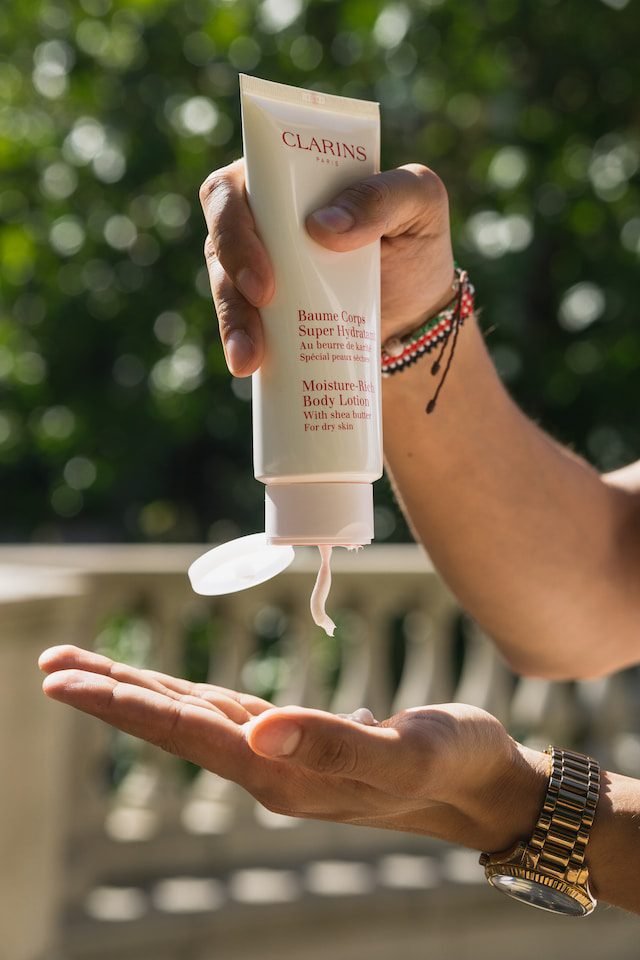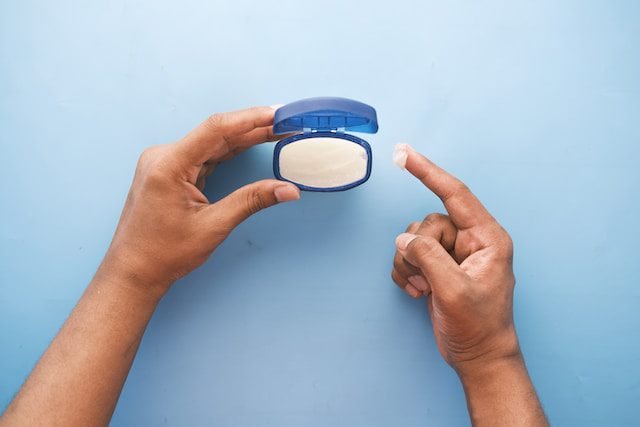Are you someone who has struggled with acne, fine lines, or other skin concerns? If so, you may have heard about tretinoin, a powerful skincare ingredient that can help address these issues. Tretinoin, also known as retinoic acid, is a form of vitamin A that has been clinically proven to improve the appearance of the skin.
However, integrating tretinoin into your skincare routine can be intimidating. With so much information out there, it can be hard to know where to start. That’s why we’ve put together this guide to help you add tretinoin to your skincare routine in a way that’s effective and manageable.
In this article, we’ll cover everything you need to know about tretinoin, including how it works, who should use it, and what to expect when you start using it. We’ll also share tips and tricks for integrating tretinoin into your routine, so you can get the best results with minimal irritation.
What is tretinoin?
Tretinoin is a medication that is used to treat acne, fine wrinkles, and certain types of dark and light spots on the skin. It is a form of vitamin A and works by increasing skin cell turnover rate, which helps to unclog pores and prevent the formation of new acne lesions.
It is available in different forms, including creams, gels, and solutions, and is typically applied topically to the affected areas of the skin. Sometimes called Retin-A but tretinoin is the brand name. It is usually used once a day, at bedtime, and it may take several weeks of treatment before noticeable improvements are seen.
Topical tretinoin is usually a prescription medication, which means that it can only be obtained with a prescription from a licensed healthcare provider. It is important to follow your doctor’s instructions carefully when using tretinoin, as it can cause skin irritation and sensitivity to sunlight.
What does tretinoin do to your skin?
Tretinoin is a form of vitamin A that has been shown to have a range of beneficial effects on the skin. It can help to:
- improve the appearance of fine lines and wrinkles and dead skin cells
- reduce the appearance of dark spots and hyperpigmentation
- even out skin tone
- tretinoin also has the ability to increase collagen production in the skin
- improve skin elasticity and firmness
- a string acne treatment
- helps reduce oily skin
However, it’s worth noting that tretinoin can also have some negative effects on the skin, particularly in the early stages of use. Some people experience redness, dryness, and flaking as their skin adjusts to the treatment. This is often referred to as the “purge,” and it can be frustrating to deal with.
Step-by-Step Tretinoin Skincare Routine
Tretinoin should be incorporated gradually into your skincare routine to minimize irritation and sensitivity. Follow these steps to use tretinoin in your nighttime routine:
Step 1: Cleanse
BBegin by cleansing your face to remove any dirt, makeup, and impurities. Use a gentle cleanser that is suitable for tretinoin users. Avoid using cleansers that are too harsh or contain exfoliating beads as they can irritate the skin. Pat your face dry with a clean towel.
Step 2: Apply toner (optional)
Toner helps to remove any remaining traces of dirt, oil, and makeup that may be left on your skin after cleansing. It also helps to restore your skin’s pH balance. If you choose to use a toner, apply it with a cotton pad or your fingertips. Making use of toners or tretinoin-safe serums prevents excessive skin sensitivity and acts as a barrier between your skin and tretinoin.
Step 3: Apply Tretinoin
Apply a pea-sized, small amount of tretinoin to your face. Start by applying it every other night, then gradually increase to nightly use as your skin tolerates it. Be careful to avoid the eye area, corners of the mouth, and any other areas of sensitive skin.
Step 4: Wait
For optimal results, wait at least 20 minutes after applying tretinoin before applying any other skincare products. This will give your skin time to absorb the tretinoin and reduce the risk of irritation.
Step 5: Moisturize
Apply a moisturizer to your face, focusing on any areas that are prone to dryness or irritation. Choose a moisturizer that is suitable for your skin type and does not contain any irritating ingredients such as fragrances or dyes. Depending on the level of your skin’s sensitivity, you may want to switch steps 3 and 5 to apply moisturizer before tretinoin. Read more about it here.
Step 6: Apply Sunscreen
Tretinoin can increase your skin’s sensitivity to the sun, so it is important to wear sunscreen every day. Choose a broad-spectrum sunscreen for tretinoin users with an SPF of at least 30, and apply it generously to your face and neck.
Step 7: Repeat
Repeat this routine every evening. You may experience some mild irritation or redness when you first start using tretinoin, but this should subside within a few weeks. If you experience severe irritation, contact your healthcare provider.
It’s important to note that when using tretinoin, it is recommended to avoid using other active ingredients such as salicylic acid, glycolic acid, or benzoyl peroxide as they can cause additional irritation. Additionally, it’s best to avoid waxing or using abrasive facial scrubs while using tretinoin, as it can cause skin damage.
Be patient: It may take up to 12 weeks to see the full benefits of tretinoin, so be patient and consistent with your routine.
Difference between tretinoin and retinol
Tretinoin and retinol are both forms of vitamin A, but they work in slightly different ways. Tretinoin is a prescription-strength medication that is typically used to treat acne and other skin conditions. It is a more potent form of vitamin A than retinol, and as such, it can produce more dramatic results.
Retinol, on the other hand, is a milder form of vitamin A that is available over the counter in many skincare products. It can help to improve the appearance of fine lines and wrinkles, but it may not be as effective as tretinoin for treating more severe skin conditions. Additionally, because it is milder than tretinoin, retinol may be a better option for people with sensitive skin who cannot tolerate tretinoin.
Who should and should not use tretinoin?
Tretinoin is a potent ingredient that may not be suitable for everyone. Here’s who should and should not use tretinoin:
Who can use tretinoin?
- People with acne-prone skin. Tretinoin is an effective treatment for acne, especially if you have blackheads or whiteheads.
- Someone with fine lines and wrinkles. Tretinoin is also effective in reducing the appearance of fine lines, wrinkles, and age spots.
- If you struggle with hyperpigmentation. Tretinoin can lighten dark spots and improve overall skin tone.
- People with rough, uneven skin texture. Tretinoin can improve skin texture, making it smoother and softer.
Who shouldn’t use tretinoin?
- Pregnant or breastfeeding women: Tretinoin has been associated with birth defects and should not be used during pregnancy or while breastfeeding.
- People with sensitive skin: Tretinoin can be irritating, especially for people with sensitive skin. If you have sensitive skin, you should start with a lower concentration of tretinoin and gradually increase it.
- Someone with eczema or rosacea: Tretinoin can exacerbate eczema or rosacea, so it’s best to avoid it if you have these skin conditions.
- People with sunburned or windburned skin: Tretinoin can further irritate sunburned or windburned skin, so it’s best to wait until your skin has fully healed before using it.
It’s always best to consult with a dermatologist before starting a tretinoin regimen to ensure it’s safe and suitable for your skin type and concerns.
How to avoid tretinoin purge and sensitivity
To reduce the severity of the purge and tretinoin sensitivity, it’s important to start with a low concentration and gradually work your way up to a higher concentration.
Tretinoin can cause an initial skin reaction known as “the purge.” This is when it prompts a rapid exfoliation of the skin, causing a temporary increase in acne or other skin concerns. The purge typically lasts for a few weeks and can be frustrating, but it’s a sign that the treatment is working.
It’s also important to give your skin time to adjust to tretinoin. Start by using it once or twice a week and gradually increase the frequency over several weeks. Be sure to apply a moisturizer before and after applying tretinoin to help soothe the skin and prevent dryness.
If you experience excessive dryness or irritation, take a break from using tretinoin for a few days and focus on replenishing your skin’s moisture barrier. Once your skin has fully adjusted to tretinoin, you should be able to use it regularly without experiencing any adverse effects.
Do you put tretinoin all over your face?
The application of tretinoin can vary depending on the condition being treated and the individual’s skin type. Typically, tretinoin is applied in a thin layer to the affected areas of the face, rather than all over the face. This may include areas with acne, fine lines, or sun damage. It is important to follow the instructions provided by your dermatologist regarding the amount of tretinoin to use and where to apply it on the face.
Can I put tretinoin under my eyes?
It is recommended to avoid applying tretinoin directly to the eye area, as this area is typically more sensitive than the rest of the face. Some people may experience irritation, dryness, or flaking around the eyes if tretinoin is applied too close to the eye area.
Do you apply moisturizer before or after tretinoin?
It is generally recommended to apply moisturizer after tretinoin to help reduce dryness and irritation. It is important to wait at least 20-30 minutes after applying tretinoin before applying moisturizer to allow the medication to fully absorb into the skin. Additionally, it is important to use a non-comedogenic moisturizer that will not clog pores or contribute to acne.
How long does it take for tretinoin to work?
The length of time it takes for tretinoin to work can vary depending on the individual and the condition being treated. For acne, some people may see an improvement in their skin within a few weeks, while others may take several months to see results. For fine wrinkles and sun-damaged skin, it may take several months to see noticeable improvements.
What should you not use with tretinoin?
There are several products that should not be used with tretinoin, including other acne medications (such as benzoyl peroxide), products that contain alcohol or astringents, and certain types of exfoliants (such as glycolic acid). It is important to talk to a dermatologist before using any new products in combination with tretinoin.
What happens if you use tretinoin every day?
Using tretinoin every day can help to maximize its benefits, but it can also increase the risk of side effects such as redness, dryness, and peeling. It is important to start with a lower concentration of tretinoin and gradually increase the frequency of use over time to allow the skin to adjust. It is also important to avoid sun exposure and use daily sunscreen while using tretinoin.
Conclusion
Building a tretinoin skincare routine can be a game-changer for your skin. It can improve acne, fine lines, and uneven skin tone. However, it’s important to know how to properly use tretinoin to avoid any adverse effects.
Remember to start slow, use a low concentration, and always apply sunscreen when using tretinoin. It’s also important to be patient and not give up too quickly, as it can take several weeks to see the full benefits of tretinoin. With the right approach, tretinoin can be a valuable addition to your skincare routine.





